Pernille Ripp's Blog, page 50
October 5, 2016
On Global Collaboration and Projects You Can Join
I started the Global Read Aloud in 2010 not knowing what it would become, not knowing how it would truly make the world smaller, connect many children and change my own life. I started it with a simple need in mind; more global collaboration and connections for the students I was teaching. I knew that the power of a great read aloud could not be disputed, I knew what a read aloud could do to to foster community. I knew what the right read aloud would do for us as readers, as thinkers, as human beings. And so I started a small project that since 2010 has taken on a life of its own.
This Monday we kicked off the 7th annual Global Read Aloud. It was the day that I gave up on my Twitter account pretty much. There simply was no way for me to keep up. With more than 937,000 students participating this year, give or take a few, I do believe we may be one of the largest, if not the largest, globally collaborative multi-day student project in the world. I cannot help but stand in awe of the number. Stand in awe of this little idea that grew into something more than I could imagine. But not just for the sheer number of children involved, but more for the lives that it is changing. For the experiences it is creating. I stand in awe of the invisible lines stretching around the globe as students connect, discuss, and share who they are with others who happen to be reading the same book as them. Imagine a world that is truly becoming more connected and you have the vision of what the Global Read Aloud is doing for the world. And my project is not alone. Other dreamers and thinkers are seeing the need for projects to unify children around the world, for better learning opportunities that include bringing the world in and the students out. We can certainly create our own, I do all of the time for the sake of my students, or we can join in on these pre-existing projects to make the world smaller. To make the world kinder. To make the world more empathetic.
Global collaboration and the way it shapes student learning experiences should not be something we just do once in a while, it should be often, it should be meaningful. It should be something our students come to expect not as something new and flashy but as something necessary for them to discover who they are as learners. Our students have a voice, they have a need to learn about others, they have the right to not just experience our differences but to know what makes us all so similar. Global collaboration provides us with our starting point, these projects become our starting point as we try to bring the world in.
To see the global projects I know of and that others have graciously shared, please access this padlet. If you know of others that should be on here, please add them. At least this is a start for what is out there.
https://padlet.com/embed/1zqnmichpq6w

Filed under: Be the change, being a teacher, global, global read aloud


September 30, 2016
One Small Act
In this world that seems more divided than ever.
In this world where headlines scream more about the bad than the good.
Where stories of goodness and kindness seem so far and few in between.
Where we read of suicide caused by bullying, of children that feel so lonely. Of adults who are not sure where they fit in so they stop trying altogether.
In this world where wherever we turn we seem to be reminded of all that is wrong with the world, we need our classrooms more than ever.
We need spaces where kids feel that they belong, feel that they the prevalent voice is one of kindness, not of tearing apart.
We need opportunities to make the world smaller, more understanding, more of all of the good.
Today, in our classroom, as a child stood frozen in fear of public speaking, another child got up quietly and stood right beside him. Stood there and coached him gently, let his presence be known and tried to speak him out of his fear. I stood there with tears prickling my eyes, knowing that no one had told that child that to be a friend meant to stand beside someone, to be a friend meant to be there in times when we might not seem as needed.
As the rest of the class sat quietly, we moved on to another thing. But this moment of a simple act of kindness is one that I will remember for a long time.
This world may seem like it is slowly self-destructing, but our kids, our future, they can still change it; one small act of kindness at a time.
Filed under: Be the change, being a teacher, being me


September 27, 2016
Some Ideas for Channeling High Energy Needs Into Better Learning Opportunities
I have the honor of teaching an incredible bunch of very energetic kids this year. Their kinesthetic energy level is high throughout the day, couple that with some also voicing loudly how bored they are in school and I have the best kind of challenge ahead. This will be a year to remember.
So I have been googling, I have been asking, and I have been spending a lot of time trying to think of ways to channel their energy into something great. Not to get them to quiet down necessarily but to get to a place where their energy is a tool rather than a hindrance. I have a lot to learn still, but a few things I have tried I thought I would share with others who may have the same awesome challenge we do.
Yoga balls. I have invested in 18 yoga balls and while the bouncing drives me a little bit nutty at times, I cannot help but marvel at the sight. After all, if this is what the kids need even right away in the morning then I cannot imagine putting them in regular chairs. Sure we have popped a few in the 6 months I have had them but when I am at a super store I pick up a few more just in case. Note; I have not switched all of my chairs for yoga balls because for some kids they are a nuisance or a distraction. Besides paying attention to their preferred seating arrangement is also giving me clues to their personality. We also have other alternate seating such as bean bags, exercise bands around the chair legs, office chairs and regular old chairs, but the yoga balls have made the biggest difference.

Switching up seating arrangement. I am a huge proponent of “choose your own seat” but this year in a few of my classes I have been doing a little bit of seat arranging to spread the energy. You see, when I have one really high energy cluster they may get really sidetracked but when I disperse the kids throughout the classroom their energy transfer to the new group. This does not always work and I am still tweaking it to get it right, but I like what I am seeing so far.
Picture book read alouds as calming tools. I end my days with a group of amazing boys. They are bouncing off of the walls by the time they get to me so sometimes trying to teach them is like a game of who can interrupt the most. Not because they are rude but because they are wired and excited. Today I had them sit on the floor with me, away from anything they could fiddle with and then read them Where the Wild Things Are in honor of Banned Books Week. I read it in the most soothing of voices, even when the Wild Things roar, and it was incredible. Immediately their demeanor changed, their voices hushed and for a few moments we got to work at a level of concentration and focus that I had not seen for a while. There is something incredible about the power of a great read aloud. There is something incredible about story time on the floor.
The turn and talk. When I teach my kids, i know I cannot be the only voice in the room so very little of our discussion is done in whole group, instead we utilize the turn and talk almost constantly. My students want to share, they want to discuss, they want to participate and so I need to make sure they all have the chance. Not just those that have enough courage to raise their hands in the air.
Incorporate brain games. I work with really smart people and one of them suggested I use some of the same brain games that another colleague had used. Genius. So in some of my classes, when we have worked for 15 to 20 minutes, the students will get 3 to 5 minutes of brain game time. All of our brain games are cooperative not competitive. All of them have very few props and are easy for kids to participate in. We play tri-bond, we build card houses, stack cups, hit a ball through the air as many times as we can without it falling to the ground and we do riddles. I am searching for more brain game activities to do with the kids as I see the benefit of them using their brains in a different way after working hard for awhile.
Writing before speaking. My students all process at different speeds and some times the very first thoughts that come to mind are not always the deepest. So we have started a write before we speak routine whenever they are doing formal discussion. It is simple; each child has access to a whiteboard (or they write right on the tables covered in whiteboard contact paper) and before they discuss something they take a few moments to write down their thoughts. Having these few minutes to gather their wits, channel their energy and also come up with something interesting to say means that all of the students have a better chance of being a part of the learning.
The right to move. Students in our classroom have the right to move as they learn. They are not asked to sit down; they can stand, nor are they are asked to sit still. As long as their movements do not distract others, they are perfectly fine. This is important because for some of our kids they listen better when they are in movement. They learn better when they have control over their bodies.
I know I need more ideas than this. I know I am only scratching the surface as far as incorporating more movement into our days but at least this is a start. This is a way for me to think more consciously about the need for movement and to embrace needs of all of the children that enter our classroom rather than just the quiet, compliant ones. So if you have more ideas please let me know, I would love to be inspired by your great ideas.
I am currently working on a new literacy book. While the task is daunting and intimidating, it is incredible to once again get to share the phenomenal words of my students as they push me to be a better teacher. The book, which I am still writing, is tentatively Passionate Readers and will be published in the summer of 2017 by Routledge. So until then if you like what you read here, consider reading my book Passionate Learners – How to Engage and Empower Your Students. Also, if you are wondering where I will be in the coming year or would like to have me speak, please see this page.
Filed under: being a student, being a teacher, student choice, Student dreams, student driven, Student Engagement


Some Ideas for Channeling High Energy Needs Into Better Learning
I have the honor of teaching an incredible bunch of very energetic kids this year. Their kinesthetic energy level is high throughout the day, couple that with some also voicing loudly how bored they are in school and I have the best kind of challenge ahead. This will be a year to remember.
So I have been googling, I have been asking, and I have been spending a lot of time trying to think of ways to channel their energy into something great. Not to get them to quiet down necessarily but to get to a place where their energy is a tool rather than a hindrance. I have a lot to learn still, but a few things I have tried I thought I would share with others who may have the same awesome challenge we do.
Yoga balls. I have invested in 18 yoga balls and while the bouncing drives me a little bit nutty at times, I cannot help but marvel at the sight. After all, if this is what the kids need even right away in the morning then I cannot imagine putting them in regular chairs. Sure we have popped a few in the 6 months I have had them but when I am at a super store I pick up a few more just in case. Note; I have not switched all of my chairs for yoga balls because for some kids they are a nuisance or a distraction. Besides paying attention to their preferred seating arrangement is also giving me clues to their personality. We also have other alternate seating such as bean bags, exercise bands around the chair legs, office chairs and regular old chairs, but the yoga balls have made the biggest difference.
Switching up seating arrangement. I am a huge proponent of “choose your own seat” but this year in a few of my classes I have been doing a little bit of seat arranging to spread the energy. You see, when I have one really high energy cluster they may get really sidetracked but when I disperse the kids throughout the classroom their energy transfer to the new group. This does not always work and I am still tweaking it to get it right, but I like what I am seeing so far.
Picture book read alouds as calming tools. I end my days with a group of amazing boys. They are bouncing off of the walls by the time they get to me so sometimes trying to teach them is like a game of who can interrupt the most. Not because they are rude but because they are wired and excited. Today I had them sit on the floor with me, away from anything they could fiddle with and then read them Where the Wild Things Are in honor of Banned Books Week. I read it in the most soothing of voices, even when the Wild Things roar, and it was incredible. Immediately their demeanor changed, their voices hushed and for a few moments we got to work at a level of concentration and focus that I had not seen for a while. There is something incredible about the power of a great read aloud. There is something incredible about story time on the floor.
The turn and talk. When I teach my kids, i know I cannot be the only voice in the room so very little of our discussion is done in whole group, instead we utilize the turn and talk almost constantly. My students want to share, they want to discuss, they want to participate and so I need to make sure they all have the chance. Not just those that have enough courage to raise their hands in the air.
Incorporate brain games. I work with really smart people and one of them suggested I use some of the same brain games that another colleague had used. Genius. So in some of my classes, when we have worked for 15 to 20 minutes, the students will get 3 to 5 minutes of brain game time. All of our brain games are cooperative not competitive. All of them have very few props and are easy for kids to participate in. We play tri-bond, we build card houses, stack cups, hit a ball through the air as many times as we can without it falling to the ground and we do riddles. I am searching for more brain game activities to do with the kids as I see the benefit of them using their brains in a different way after working hard for awhile.
Writing before speaking. My students all process at different speeds and some times the very first thoughts that come to mind are not always the deepest. So we have started a write before we speak routine whenever they are doing formal discussion. It is simple; each child has access to a whiteboard (or they write right on the tables covered in whiteboard contact paper) and before they discuss something they take a few moments to write down their thoughts. Having these few minutes to gather their wits, channel their energy and also come up with something interesting to say means that all of the students have a better chance of being a part of the learning.
The right to move. Students in our classroom have the right to move as they learn. They are not asked to sit down; they can stand, nor are they are asked to sit still. As long as their movements do not distract others, they are perfectly fine. This is important because for some of our kids they listen better when they are in movement. They learn better when they have control over their bodies.
I know I need more ideas than this. I know I am only scratching the surface as far as incorporating more movement into our days but at least this is a start. This is a way for me to think more consciously about the need for movement and to embrace needs of all of the children that enter our classroom rather than just the quiet, compliant ones. So if you have more ideas please let me know, I would love to be inspired by your great ideas.
Filed under: being a student, being a teacher, student choice, Student dreams, student driven, Student Engagement


September 25, 2016
My New Favorite Picture Books, September 2016
Oh September, with back to school excitement here in Wisconsin and seemingly so many new books to explore. This has been a great month for picture books in our classroom as we started to build our reading community and discover how meaningful reading can really be. Yesterday as I decided which new picture books to put on display, I realized that surely I must highlight a few of them to others, because I cannot be the only one obsessing over all of these picture books.
If you would like to see what else I am reading, follow me on Instagram, I highlight the best books that I read on my account. Now is also the time I start to think about our Mock Caldecott unit, and some of these highlighted here are definitely on that list.
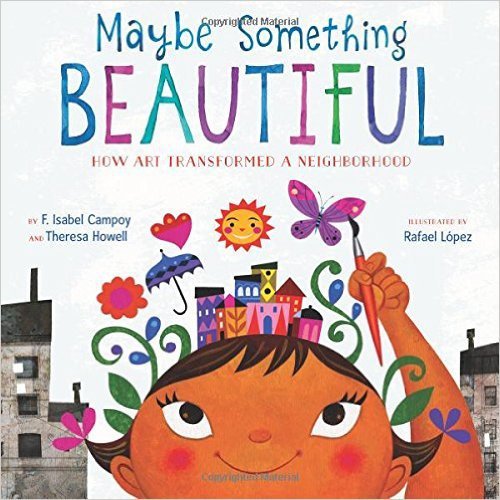
Maybe Something Beautiful written by F. Isabell Campoy and Theresa Howeel and illustrated by Rafael Lopez is well, beautiful. The story of how a neighborhood was changed from adding art to the gray buildings is also one that is inspirational. I love how this can inspire conversations about the small changes we can make that will have a great impact.
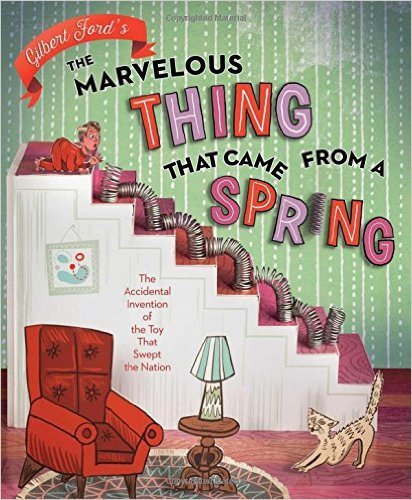
I love informational picture books because of our epic non-fiction picture book project. Gilbert Ford’s The Marvelous Thing That Came From a Spring is not just a great story, the illustrations are fantastic in it with their mixed media form. This is a book I will use as an example of how you can write great informational text that reads like a story.
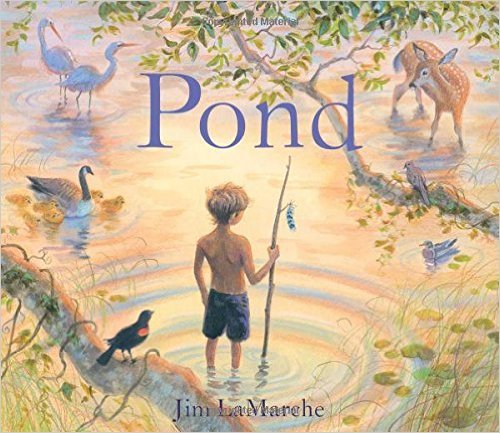
I am always on the look out for small moment picture books because they are such great teaching tools, in fact, soon an entire post will be dedicated to these picture books. So Pond by Jim LaMarche is a welcome addition to our classroom as it follows Matt and his friends’ dedication to bringing the pond back to life.
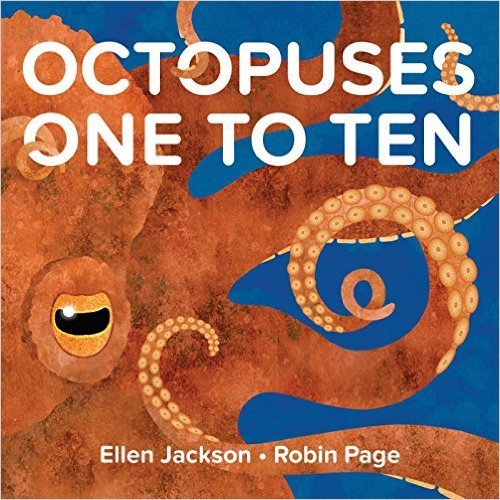
Another fascinating picture book for how to write great informational text is Octopuses One to Ten By Ellen Jackson and Robin Page. You do not have to love octopuses to be in love with this book and how they weave fact upon fact into a counting book.

I know I am lucky that I have already received this book. This is one of those books that we eagerly await and I am so excited to share it with my class. Jon Klassen’s hat books are on numerous other lists on this blog and he does not disappoint with the final book in the trilogy We Found a Hat.
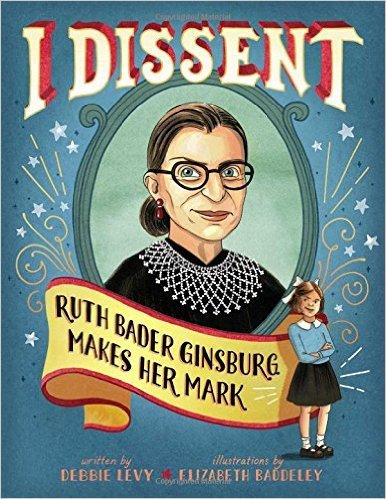
I have loved Ruth Bader Ginsberg and her take on the Constitution for a few years but it was an absolute delight to find out more about her in the new picture book about her life. In I Dissent: Ruth Bader Ginsberg Makes Her Mark written by Debbie Levy and illustrated by Elizabeth Baddeley we really get to understand why RBG is such an important part of our judicial and political history as a nation.
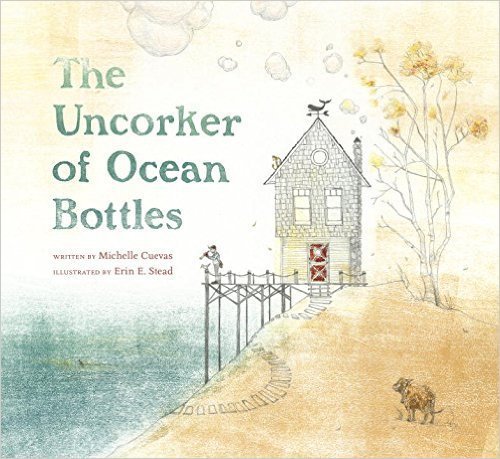
Oh what can I say about this stunningly beautiful book? The Uncorker of Ocean Bottles written by Michelle Cuevas and illustrated by Erin E. Stead is everything that I love about picture books; a moving story, beautiful illustrations, and a message that stays with you long after you have read it.
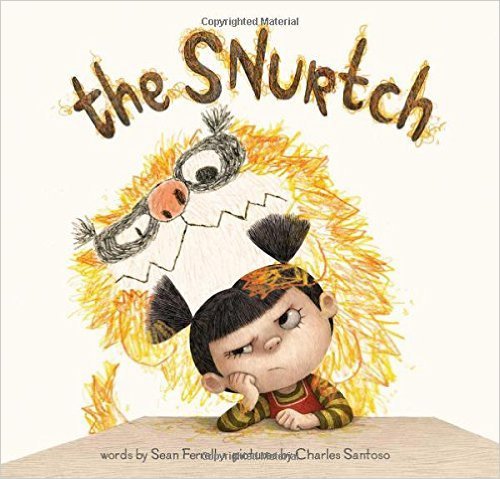
What happens when the Snurtch keeps ruining your day? How many kids can relate to the picture book The Snurtch by Sean Ferrell and illustrated by Charles Santoso. This is a great picture book to talk about figurative meaning as well.

A Bike Like Sergio’s written by Maribeth Boelts and illustrated by Noah Z. Jones was a hit at our house. So much so that we read it once and then my oldest asked me to read t again. It is a book with a great message that can inspire conversation about how to do the right thing even when it seems like it would be better to not do the right thing.
Just a few new favorites. I will also be updating my lists for Picture Books that Celebrate Books and Libraries, as well as the post Great Picture Books to Spark Imagination.
Filed under: being a teacher, Literacy, picture books, Reading


When the Book is Just “Ok”
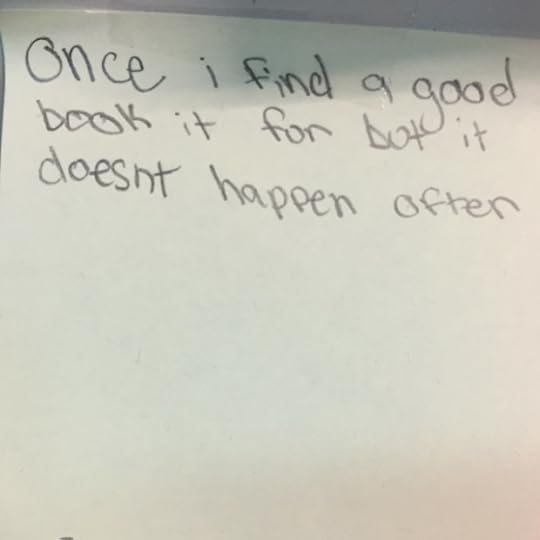
“Once I find a book it’s fun but it doesn’t happen often” says one of my students.
I have been spending little time in official reading conferences so far this year. These reading conversations that are the foundation of how my readers grow are far and few in between. But it is not from being forgotten, it is because of how many students have needed help finding a book.
We start every class with 10 minutes of glorious independent reading. As students read, the quiet settles over them, and I observe, ready to confer, but also ready to help out. This year I have noticed just how many kids are clearly not into their book, whose eyes shift restlessly from book to page, who are still on the same book they picked up on September 2nd. So I ask them, “Do you like your book?” and without fail they answer, “It’s ok…”
Only ok. Not great, not amazing, but ok. A 6 out of 10 at most. They are content with a mediocre book because then at least it looks like they are reading. It looks like they are following the guidelines set forth and perhaps I, the teacher, will leave them alone. Yet this is so far from ok. Reading only “ok” books is not what will make reading better for our kids. Reading only ok books will not inspire further reading, nor will it change their minds that reading is actually worthwhile. In this instance being ok is not ok.
So we book shop together, immediately, for this is a reading crisis that deserves urgency. We discuss when the last time was that they read a book they really loved (sometimes never) and we pull book after book after book off of the shelves so that the reading experience they will embark on is as far from ok as we can get it.
I could wait, of course, see them muddle through the pages and perhaps finish a book in a few weeks. Glad to have one read. I could hold back and tell them to book shop by themselves, let them explore the shelves and hopefully find something worthy of their investment. Yet, the problem with the “ok” book lovers is that if they stay on this path, with no help from others, they will remain ok until they are not. They will remain ok until they finally do give up fully and reading is no longer something they are willing to even attempt.
So when we have kids in our rooms that do not like reading, we must be urgent in our reading approach. We must talk up reading in such a way that there simply is no way around it. We must emphasize every day that reading in here matters and that you should only be reading great books. That you should not be satisfied until you find a really good book. That we will support the abandonment of books until a really great book is discovered because in here reading is meant to be more than ok. In here, we should all be trying to find our new favorite book, not just settle for whatever we grabbed when the teacher told us to find a book.
I am currently working on a new literacy book. While the task is daunting and intimidating, it is incredible to once again get to share the phenomenal words of my students as they push me to be a better teacher. The book, which I am still writing, is tentatively Passionate Readers and will be published in the summer of 2017 by Routledge. So until then if you like what you read here, consider reading my book Passionate Learners – How to Engage and Empower Your Students. Also, if you are wondering where I will be in the coming year or would like to have me speak, please see this page.
Filed under: being a teacher, Reading, Reading Identity


September 20, 2016
To All the Great Leaders Out There
I have worked for a few incredible administrators, both at the school level and also at the district level. I have worked for administrators that saw the bigger picture, that always trusted (even if they were scared), that always kept kids first. I have worked for leaders that were visionary in the way they created opportunities for us to grow as educators. That saw each of us on our own learning journey and would ask how they could support rather than tell us which way to go. I am lucky. Not everyone works for leaders like that.
So when I think of what I could share with administrators who are looking to create empowered teachers. When I think of what I could share with those who want to be great, who probably are great, but want to keep growing. When I think of what I could share with some of the amazing administrators that I know are out there, it boils down to a few things.
Don’t be the roadblock. Be the one that sees the bigger picture and encourages teachers to try that new idea, to think new things, and to always ask a lot of questions. If your technology is blocked, ask why. If you keep hearing no from higher up, ask why. Be a questioner yourself, and do not be afraid when educators question the systems they work in, be afraid when they don’t.
Don’t be the dominator. Yes, the world needs your genius, but it also need the genius of others. Be the facilitator of conversation, be the one that gives time for those to happen, not the one that speaks the whole time. If you worry that you may speak too much, time yourself versus how often others speak. I promise you it will be eye-opening.
Be the path that others want to follow, not the one they have to follow. Be a leader that questions themselves, that celebrates the great but also discusses the failures. Create an environment where self-reflection and school reflection is the norm, not just when something goes poorly.
Be someone who supports. Someone who trusts. Someone who sees the good even when it is hard to see. Someone who celebrates and knows when someone needs to be celebrated. Make tough decisions but explain how you make them. Say yes more than you say no, but when you say no explain why.
Invest in choices that will benefit all learners not just the majority. If a teacher has a concern about a program, question the program not just the teacher. make sure kids know your name, know that you are in their corner. Be the one that searches for the bigger story not just the story that is being told. Be curious and be proud of your curiosity. Be proud of your school, be proud of your staff, be proud of your kids. Even if that school is tough. Even those staff members are not perfect, even if those kids make your day as hard as they can. Be proud, be thankful and know that you are never alone. That great leaders always are a part of the team, a part of the community and that they stand on the shoulders of the educators that they lead and the kids that they educator. That your staff needs you as much as you need them.
I have worked for a few incredible leaders who led with their heart, as well as their mind. Who led with everything they had in their pursuit to make school a place that all kids and all adults wanted to be a part of. I am so grateful, I hope that many more educators get to work for leaders like that.
Filed under: administration, being a teacher, leader


September 17, 2016
A Few Ideas For Better Book Shopping
As we continue our work bonding as a reading community, I am struck by how often the idea of finding a good book comes up. Over and over again students share that they like reading only when they have the right book, that they cannot find the right book, that they have never read a book they truly like. And I watch them browse the books, unsure of what to look for, idly picking a book up only to drop it again the very next day. The more I think about; book shopping and how to find a great book is one of the biggest skills we can teach students before they leave us. And others agree, Donalyn Miller wrote her phenomenal book Reading in the Wild based on the notion that students need to be able to be readers without us and I couldn’t agree more. So while book shopping and how to find the right fit book is something being taught in classrooms all over the world, how can we make it more effective?
For the past few years, I have been inspired by my students to tweak the process a little bit. Here are the small things that seem to make a big difference in how we book shop in our classroom.
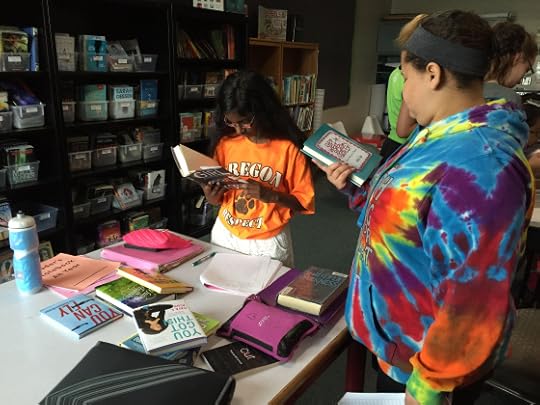
Old way: Books are displayed like a bookstore, in a row on the book shelves.
New way: Books are grouped together in bins by genre, topic, or author.
What difference does it make? The bins can be placed on tables as a group and students can easily flip through them. Students can also more easily identify where books are that may capture their interest. It also means that book covers are displayed out, catching the eye of readers as they sit in the classroom.
Old ways: Books are randomly placed back in their genre bins.
New way: I place all books back in the library taking care with which book is at the front of the bin, thus facing out to the class.
What difference does it make? Much like bookstores and libraries change their displays, so must we, so the fronts of our bins become mini displays that are ever changing. This is also a great way for “older” books to be discovered. Students see amazing books waiting to be read whenever they are in our classroom.
Old way: A designated book shopping time.
New way: Book shopping whenever they need it.
What difference does it make? Kids need a new book whenever they need a new book. They should not have to wait until a designated time or day to book shop. Encouraging them to book shop whenever it is needed, means that they always a have a new book to read. This also means that I can see how students book shop on their own and what their habits are, which, in turn, helps me help them become better book shoppers.
Old way: Book shopping was mostly silent as students tried to get through it as quickly as possible.
New way: Book shopping is a social event at least every few weeks.
What difference does it make? One of the things we work a lot on is creating a community of readers, and that community comes from finding your reading peers. So when students can bookshop and are encouraged to discuss books as they go, we are creating ties that bind us together as readers. I jump in and out of conversations as they book shop, perhaps highlighting a few books or helping a child that seems to be lost, but I love the conversations that I overhear about books and why a certain one looks amazing. This also shows that I am not the center of book shopping because students should not rely on me to be the one that finds them a great book, at least not at the end of the year, so the bookshopping event plants the seed for them to rely on each other, rather than just the teacher.
Old Way: Book shopping meant just new books.
New way: Book shopping piles are now a mix of new books and old favorites.
What difference does it make? While we all love brand new books, there are so many great books published in earlier years. I put these in the piles with the brand new shiny books so that students cane be introduced to them as well. I love when a child sees a loved book and has to share it with others to recommend it.
Old way: Book shopping lasts a few minutes.
New way: Book shopping takes the time it takes.
What difference does it make? Book shopping should take time, after all, students should be flipping through pages, perhaps reading a few, looking at the covers, and discussing books with each other. I ask my students to slow down and savor the moment, this helps them understand that book shopping is not just something we get through, it is something we enjoy.
Old way: Teacher as the first stop for book recommendations.
New way: To-be-read list as the first stop.
What difference does it make? Their To-Be Read list is my way of helping them rely on themselves rather than just on the teacher. So while I love book-shopping and recommending books, I also need to teach students that they can rely on themselves. So when a child asks me for a great new book to read, I ask them to find their to-be-read list first. This year our list is in our reader’s notebooks which stay in the classroom so the students always have access to it.
Old way: Book talks once in a while.
New way: Book talks every day.
What difference does it make? Inspired by Penny Kittle and her great book Booklove, I book talk a book every day, these can be books I have read or books that are brand new to us. I try to book talk a new book every class because kids want to check out the books right away so it is not fair to tell them to wait until the end of the day. My bigger goal though is that students take over these book talks, one student has already jumped in, and they start to recommend books to each other. Again, trying to shift the responsibility back on themselves rather than the teacher to find them books.
Old way: Little conversation about books they abandon.
New way: Book abandonment is written down and discussed.
What difference does it make? When a child abandons a book it is a conversation waiting to happen. Why did they choose to abandon the book? When did they abandon it? This is why we keep track of the books we abandon on our To-Be-Read lists, something most of them think is odd, but when I try to help them discover who they are as readers we start with the books they abandon. It is amazing to see students realize what types of books they do like by studying the types of books they don’t.
Old way: Book shopping guidelines apply just within the classroom.
New way: Book shopping guidelines apply to the library as well.
What difference does it make? I have noticed that students who know how to bookshop in our classrooms sometimes flounder in the larger school library. So this year, students are asked to bring their reader’s notebooks with their to-be-read lists in them and then book shop together. I will also be walking around with the groups pointing out great books.
A final idea for better book shopping is also to have a stack of books ready for the kid that just hates reading. These should be some of the books that have had the most success with other kids that really have written off reading. I pay attention to what the game changer books are for my 7th graders and will often pull these out when I help a child who says they hate reading find a book. It is amazing what some of these suggestions have done for planting a seed about how reading is maybe not the worst thing in the whole world. To see our list of some our game changers, go here.
I am currently working on a new literacy book. While the task is daunting and intimidating, it is incredible to once again get to share the phenomenal words of my students as they push me to be a better teacher. The book, which I am still writing, is tentatively Passionate Readers and will be published in the summer of 2017 by Routledge. So until then if you like what you read here, consider reading my book Passionate Learners – How to Engage and Empower Your Students. Also, if you are wondering where I will be in the coming year or would like to have me speak, please see this page.
Filed under: being a teacher, Literacy, Reading, Reading Identity


September 14, 2016
The Worst Class in (X) Years
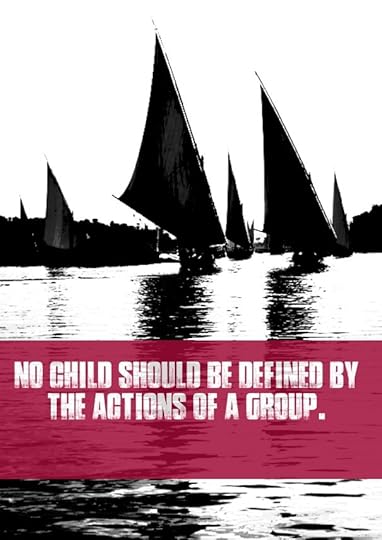
My last year as a 5th grade teacher we were warned, in a friendly way ,of course, as these warnings tend to be. “Oh, you will have your hands full…” Oh, THAT group is coming up.” My team and I had seen these kids come up through the years, that is the beauty of elementary school. Yes, we had seen the tantrums, the fighting, the crazy behavior that made many label this group as the worst in (insert however many) years. But we also had seen the kindness, the energy, the fun that these kids projected and knew that while we may have our hands full, the year with them would be a year where we would always strive to look for the good, rather than the bad because although the bad was so easy to spot, it should not define a group of kids. Sure there were days where we could not believe what was going on but what I remember most about that year was how incredible the kids were. How much fun we had. How there were these incredible lows but also days that were some of the best of my teaching career. My team would agree with me on this. Yes we had THAT group but also loved THAT group.
Every year since then I have taken that same pledge; to always look for the good first. To always praise, to always point out how great of a group this group is. To change the group narrative in some small way. To always assume that this will be an incredible year no matter the reputation of a group. I think it is so easy to fall prey to the notion of the worst class ever. I think it is so easy to just want to get through a year as quickly as possible, I know there are days that seem never ending where we question everything we do. Yet when we do, we forget something very important; not every kid is going to have a bad day every day. Not every kid is going to have a bad class every class. Sometimes it may seem like this is the toughest day yet, but that too shall pass and just like we hope for a better day tomorrow, so do the very kids we teach.
When we let the actions of a few define an entire group, we are dismissing the individuals that make up that group. We are dismissing the kids that come to school hoping that today will be a good day. Hoping that this is the year they can finally escape the reputation that seems to follow them. As a parent I shudder at the thought of my own children’s class being labeled as the worst in however many years, because how do you ever change that? How do you stop a child from believing that they are horrible when that is what they hear whispered?
So today, much like every day, I will look for the good. I will praise the kids for all of the amazing things I see and yes, there may be ill decisions and tempers flaring, but those will be handled on an individual basis. I will not let the actions of a few tell the tale of the whole. And I will tell my kids, much like I do almost every day, that I have the best job in the world, that I cannot wait to come back tomorrow even if today was tough. Because it is true. We get to teach and teaching is only for those who can see the good in kids, no matter how much a child cannot see it themselves. We get to teach, which means that we d believe that this is the year a new narrative can be written. That this is not how a year will be.
No children should be told that they are a horrible group of kids. They are kids period. And we owe it to them to see beyond their reputation and re-invent their group identity. That is why we teach, that is why we have the best job in the world.
I am currently working on a new literacy book. While the task is daunting and intimidating, it is incredible to once again get to share the phenomenal words of my students as they push me to be a better teacher. The book, which I am still writing, is tentatively Passionate Readers and will be published in the summer of 2017 by Routledge. So until then if you like what you read here, consider reading my book Passionate Learners – How to Engage and Empower Your Students. Also, if you are wondering where I will be in the coming year or would like to have me speak, please see this page.
Filed under: Be the change, being a student, being a teacher, student choice, Student dreams


September 9, 2016
How to Have Better Student Discussions
Today was the sixth day of school. It has been a whirlwind of reading habits, book shopping, learning how to email, and today; how to actually have a decent discussion. This may seem really simple but year after year I find that many students lack confidence when it comes to discussions, even when previous teachers have had them engaged in their classes. So this year rather than just try to teach them throughout the year, we decided to create a foundation for it now, so what did we do? We combined a few tried-and-true strategies.
We fishbowled to start with.

I invited four volunteers to come up and discuss an unknown text with me. I had to follow the same expectations as them. For the first few classes we did a poem with mixed results, for the final three we did an op-ed piece on why tweens should not have cell phones with better results.
So what was the set up?
Everyone gets a copy of the text, one classroom set, so they do not have to share.
Everyone gets two cards or two of something else.
Groups either sat at whiteboard tables (tables covered in whiteboard contact paper – they are brilliant) or had a two-dollar whiteboard (take a shower panel and get it cut down into six pieces, they cost $2 a piece, I have twelve of them for collaboration).
Everyone gets a “Bounce card.”
Everyone gets an expo marker.
Expo marker and whiteboard: After the text has been read (typically by themselves not out loud so make the text accessible for all. This is not a reading strategy lesson per say but rather a discussion lesson), every child should take a few moments to write down their reactions or questions before the discussion starts. That way everyone has a moment to think before the conversation ensues.
Two cards: We used the tried-and-true way to get everyone to speak. When a person speaks, they put their card into the middle. They cannot speak again then until everyone else has also spoken and put a card in the middle. This is to help everyone actually add their voice. I do two cards so that they all have to participate at least twice. After the cards are used up, they can speak as much as they would like.
Bounce card: Again, not my idea but from the book Total Participation Techniques: Making Every Student an Active Learner via our awesome 8th grade team. The Bounce card is a visual tool for kids to remember to “bounce” off each other’s ideas rather than just state their own opinions. There are three different paths they can take, they can bounce, sum up, or inquire. Having the card in front of them is a helpful reminder to how they should be discussing. Here is what our cards look like.
Teacher role: Coaching, not teaching after the fishbowl. Our job is not to lad the conversation but to let the kids figure it out.
After the fishbowl, it was their turn. I numbered students off so they would be in mixed groups and let them loose, all supplies were already set up for them.
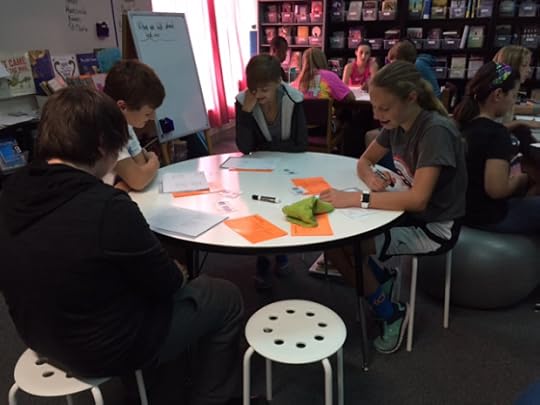
I did not give them any questions to discuss because I want them to start thinking about their own reactions to text. My students wanted me to but I did not, at some point they have to start generating their own questions so why not start today?
We kept this trial run short, around 15 minutes to make sure they stayed on track. It worked pretty well. As I walked around I loved seeing how engaged the kids were, how they were trying to help each other out and add their voice, and how they asked for people to “bounce off” of their ideas.
At the end of the class, I asked them to please reflect on themselves. We spoke about how often we reflect on how others do in a task but forget to look inward and that we are the ones we need to be concerned with, not how others do.
On Monday, our follow-up lesson will be six different tables set up with three different types of topics. Two tables are set up with wordless picture books (Unspoken by Henry Cole and Bluebird by Bob Staake), two are set up with op-ed pieces (why kids should have homework and why schools should have uniforms), and finally two tables will have poems (Langston Hughes I, Too and The Abandoned Farmhouse by Ted Kooser). Students will pick which table they would like to be at but then have to select the other two formats the two next days. Therefore all students will get to try discussing all three types of formats. I am excited to see how this foundational skill will play out this year.
I am currently working on a new literacy book. While the task is daunting and intimidating, it is incredible to once again get to share the phenomenal words of my students as they push me to be a better teacher. The book, which I am still writing, is tentatively Passionate Readers and will be published in the summer of 2017 by Routledge. So until then if you like what you read here, consider reading my book Passionate Learners – How to Engage and Empower Your Students. Also, if you are wondering where I will be in the coming year or would like to have me speak, please see this page.
Filed under: being a teacher, new year, talking





